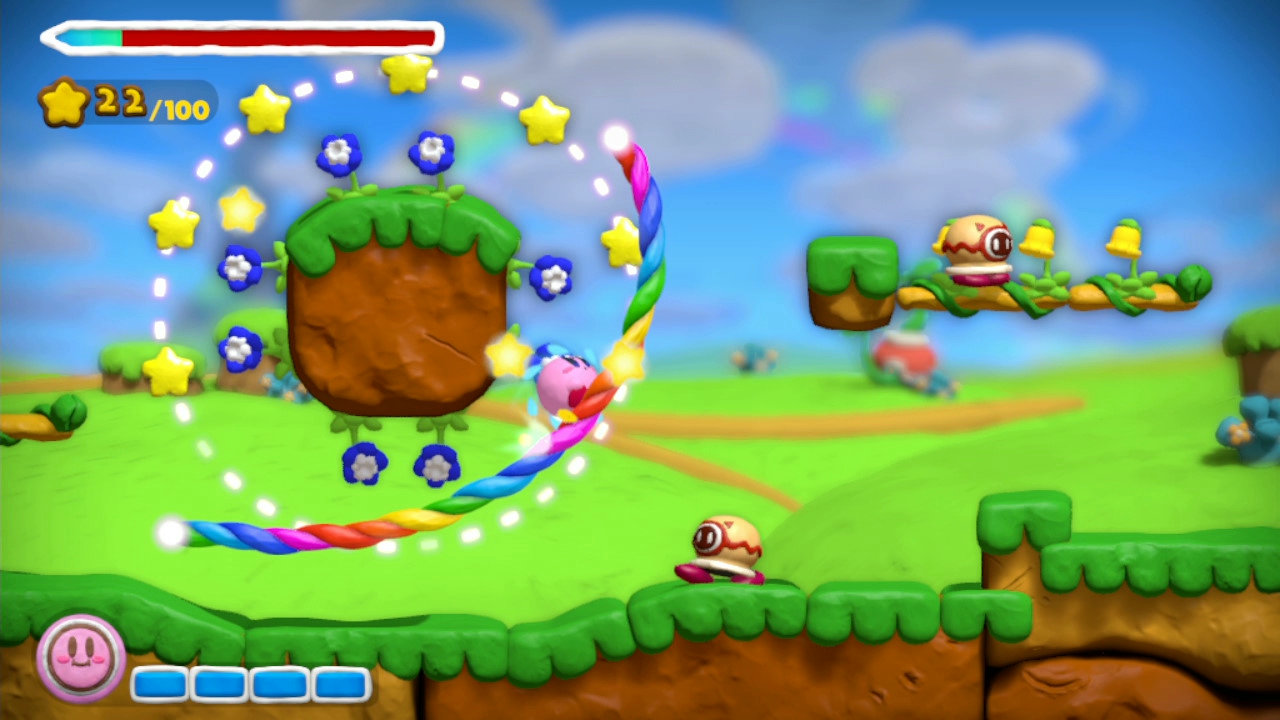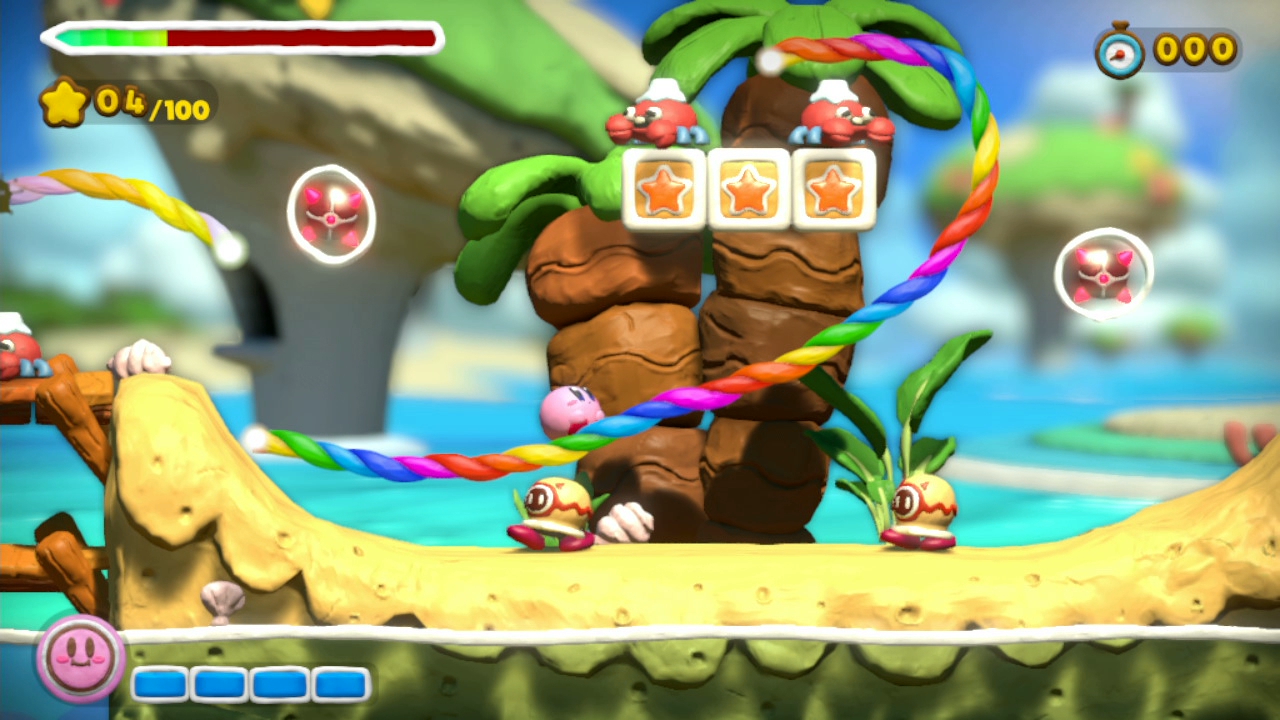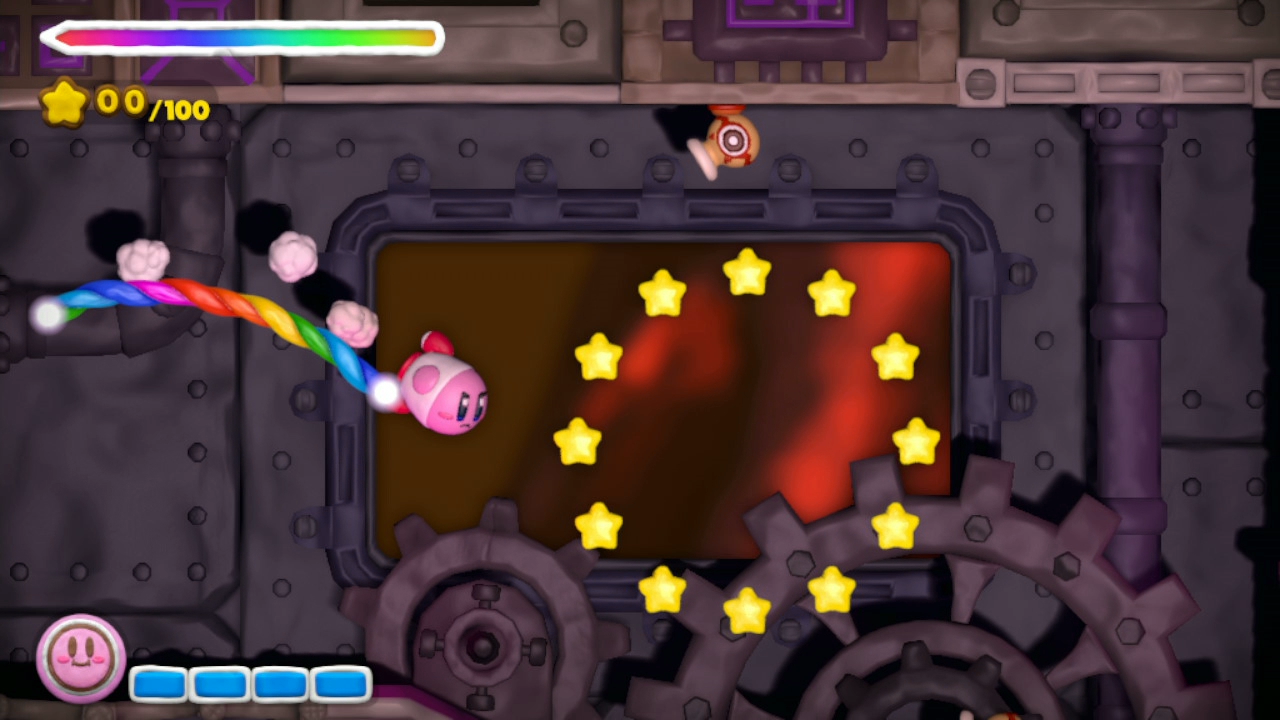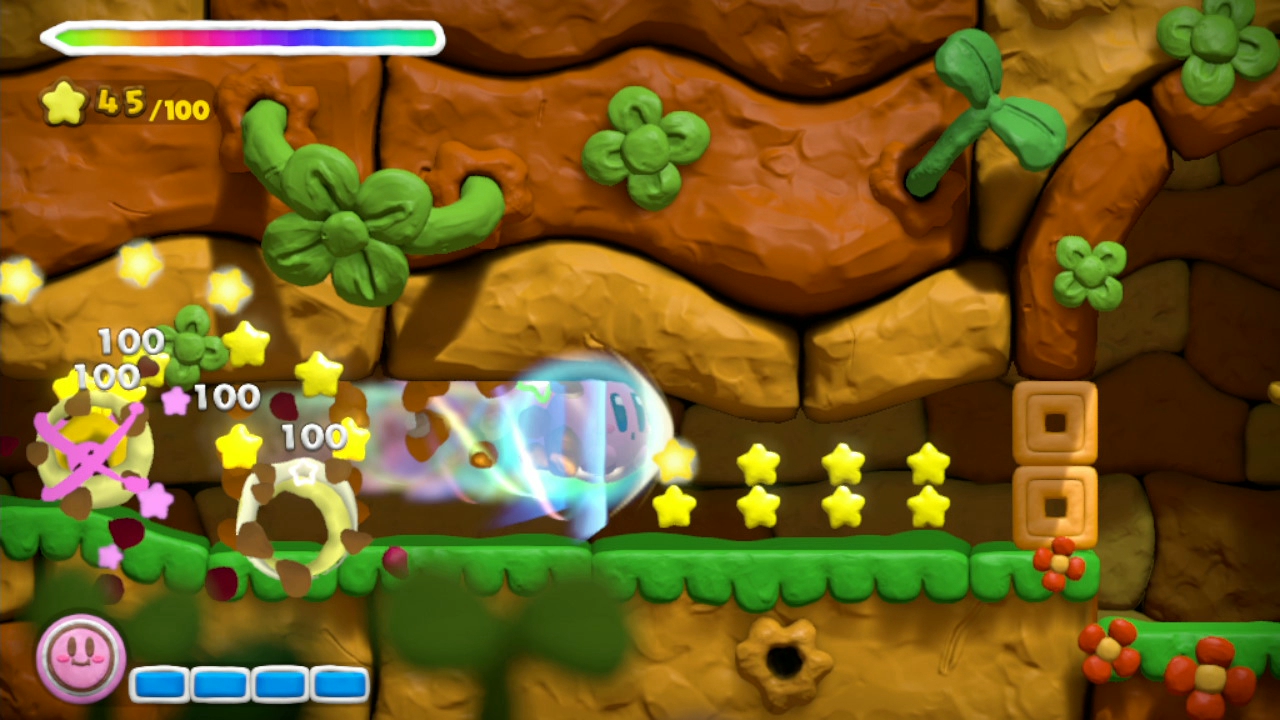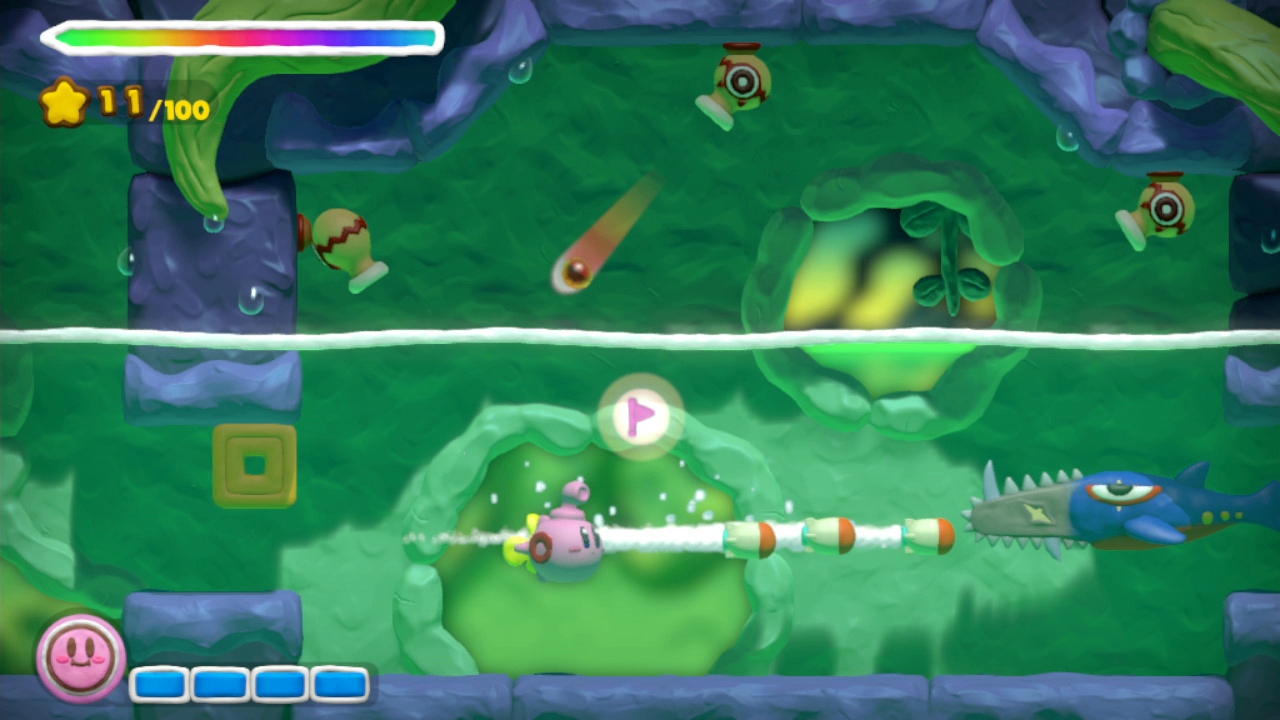In 2005, Nintendo released Kirby and the Canvas Curse -- a title made to take advantage of the then very new touch screen technology of the DS. While the game received high praise upon its release, the actual sales demonstrated its more niche market and appeal. This made the revealed sequel, Kirby and the Rainbow Curse, a very surprising but pleasant announcement for fans of the original.
We were able to check out a bit of Rainbow Curse gameplay at a recent Nintendo press event which, while brief, was quite a detailed look at the one of the most innovative entries into the franchise yet.
Similar to Rayman Legends, Rainbow Curse plays heavily with the Wii U Gamepad, as players must control Kirby by tapping the stylus in the desired direction. The person actually playing the title even remarked with surprise that he didn't look up at the TV screen the whole time.
Of course the main mechanic of this game is the Rainbow Meter, which allows the player to draw rainbow paths and lead Kirby into places and heights he normally can't reach, as well as to connect between two unlinked platforms and even gain a speed boost.
Kirby can transform into various objects as well -- such as a rocket, submarine and the world's cutest tank -- and use unique skills in every form. His tank form, for instance, fires special long distance rounds that are effective against airborne foes.
Even cooler, when you gather 100 of those stars scattered around each level, you can activate an incredibly strong special attack. The tank's special has Kirby fire a large amount of projectiles that obliterate nearly all enemies on screen. Kirby's normal attack also has a special: a powerful forward rush that doesn't seem to be triggered by activation of star power.
Rainbow Curse's style mimics the texture and movement claymation, a type of animation similar to hand drawn 2D but instead uses live-action stills of clay sculptures. The process is very arduous and as a result, tends to have a slightly jerky quality to it. Somehow the animation in the game actually mimics that same quirk, which lends a strong authenticity to the graphics.
Keep in mind, however, that the jerkiness is purposely and the game still runs at a smooth 60 FPS. Graphics are in HD quality, meanwhile, and the backgrounds are colorful and well detailed, just as in nearly any other Kirby title.
My only concern is that Rainbow Curse might be a bit too easy -- a trait shared by both Canvas Curse and the more recent Kirby's Epic Yarn. I suppose we'll have to see whether that's the case once the game launches in North America next year. I do know, though, that Kirby's next adventure will be a fun one, regardless of difficulty.

